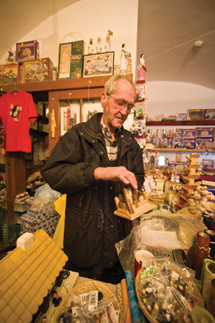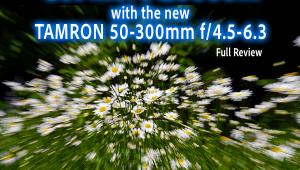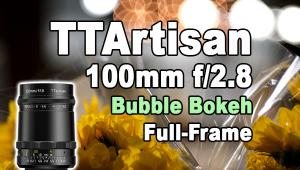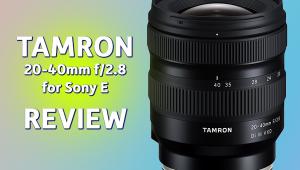Canon’s EF 14mm f/2.8L II USM Ultra-Wide Lens
The expansive coverage of a 14mm lens may be more than you think you need. But you'd be surprised to discover that it reveals a world of possibilities that might otherwise escape you. While it certainly is ideal when shooting in open country, a super-wide lens can do wonders in tight quarters. To check out this lens, and along the way explore the potential of this focal length, I took the Canon EF 14mm and my Canon EOS 5D to Prague recently, where I practically forced myself to think only "ultra-wide."
 |
First off, some lens specs. The EF 14mm II is a near-rectilinear-projection, ultra-wide angle optic offering a 114° field of view. That means it's really wide, but not quite a fisheye. And near-rectilinear means it doesn't produce the obvious outward bowing typical of very wide lenses, most pronounced in fisheyes. Translation: I didn't have to worry about my pictures suffering from that bloated look often obtained from super wides. With curvilinear (read that: barrel) distortion practically eliminated, this lens lets you visually explore your world along the straight and narrow...I mean, wide.
However, there is a downside--subjects near the edge do get distorted. It may not be immediately obvious until you look at recognizable shapes near the edge of the frame. For instance, a person looks elastic. Also, converging verticals seem to take on a life of their own if you tilt the lens up or down too much. Some convergence, however, can lend a dramatic element to the shot, and in modest amounts can easily be dealt with in Photoshop. In fact, even the "elastic man effect" can be remedied, albeit with some judicious cropping.
 |
 |
|
|
||
You may notice optical vignetting, most observable at f/2.8 (maximum aperture), although this disappears entirely when stopped down (f/8 is a safe bet). But even at f/2.8, vignetting is not egregious and you may decide to use it to frame the image. Optical vignetting is readily corrected during raw conversion or in Photoshop.
This lens is, according to Canon, an improvement over the original EF 14mm. It features better optical construction, with aspheric and ultra-low dispersion lens elements, resulting in a claimed enhanced performance overall. But it's not perfect. You can still see lateral chromatic aberration in peripheral areas of the image where highlights reside adjacent to dark tones. It's evident as green and purple fringes. But it's not very obvious--in fact I only noticed it after painstakingly looking for it. And it is correctable. In Photoshop, make the correction under Filter>Distort>Lens Correction (where you can also correct for perspective and vignetting), then under Chromatic Aberration. Better still, correct it during raw conversion. The result, at least with Photoshop's raw converter, is arguably cleaner.
 |
|
|
Additional improvements to lens coatings and internal construction reduce flare and ghosting (that rarely cropped up), making the lens more digital-savvy. As with the previous lens (and others of its ilk), the lens shade is petal-shaped and built-in. Filters are rear-mounted (use gelatin filters), although with my D-SLR, I saw no need for them. The only filter I would have liked--a circular polarizer--can't be accommodated. Still, the lens does render good color unaided. Additionally, as with many of the newer lenses, this lens features a circular aperture for improved appearance of out-of-focus highlights. And, as with other current L-series lenses, it's designed to withstand moisture and dust. The new, secure lens cap also helps.
In The (Ultra-Wide) Field
I came to Prague with two lenses: the EF 14mm that I was testing and what has now become my standard lens, the EF 24-105mm IS (Image Stabilized). At f/2.8, the EF 14mm is a relatively fast piece of glass, so I could easily hand hold it even when shooting in a dimly lit interior. Using flash wasn't always practical, because I'd have to bounce the light in order to disperse it over a wide enough area to avoid falloff.
Even with a lens as wide as 14mm, I still found myself tilting the camera upward to encompass an entire building. After a while I learned to move back, so I could minimize convergence, if not overcome it entirely, while holding the camera level. That often meant extensive foregrounds. I found ways of dealing with that so the seemingly empty space became a contributing element, helping to enhance the sense of the depth and scope of the scene, or I'd find something (often people) with which to fill the space. When push came to shove, I was willing to crop out the excess.
 |
|
 |
|
 |
|
|
- Log in or register to post comments

















































